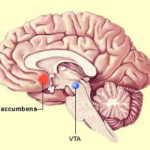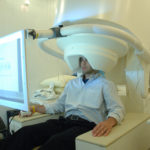A better business with neuromarketing.

Neuromarketing is a term unfamiliar to most Internet marketers. It represents a shift away from old marketing strategies based on understanding customer behaviors to understanding why customers buy.
For example, walk down the aisle of any supermarket. Market research will tell you which products sell more than others and data analysis will tell you customer gender, age, income and buying habits. Feedback from consumer focus groups and eye-tracking programs will tell you the advantages of products placement and packaging (design, size, color combinations, font style and size).

This is not much different from website designers who use the same elements to attract and hold viewer attention. Or, web analytics where detailed viewer and customer profiles and on-line behavior help to refine a target market.
What Makes Neuromarketing Different?
Neuromarketing looks at the hidden elements in the decision-making process that affect a final purchase choice.
If you were to ask customers about why they purchased a specific item, we would think answers would be logical and reasonable. However, reasons are more likely to be thoughts explaining and validating a choice and not the real “why” behind a choice.
Brain research tells us “choice” registers first on a subconscious level and then at the level of conscious awareness. This means initial decision making is occurring at a deeper brain level and out of conscious awareness.
What neuromarketers want to know is what is triggering this subconscious response first, favorable or unfavorable, that will determine a choice to purchase or not.
Going back to our supermarket example, customers who purchase laundry detergent have their favorites. All laundry detergents get clothes clean, but advertising convinces you that some get clothes cleaner than others.
They can’t. They can give you additives for hard water, enzymes for stains and optical brighteners that improve the appearance. Without these additives, your clothes will still be clean, but not look clean based on what advertising tells you your clothes should look like.
Now, not only should your clothes look clean but they should also smell fresh. Brands that add optical brighteners and fragrances lead you to believe that any extra cost is worth it to guarantee you really do have clean and fresh smelling laundry.

This is physical neuromarketing engaging your brain’s visual perception of “cleanness” and the olfactory sense of “freshness.” Therefore, as you come down the detergent aisle, your brain is already physically primed by past associations and you don’t think twice about looking at other brands.
The real secret of neuromarketing is not just neural associations of physical sensations, but reaching down to your level of your brain’s “nucleus accumbens.”
What Does My “Nucleus Accumbens” Have to Do With It?
Your nucleus accumbens is a small region in each hemisphere located in the front and lower part of your brain. It acts as a conduit center for the emotional sensations of pleasure, reward, and motivation. (red dot area)

By measuring this part of the brain with a fMRI (functional magnetic resonance imagery) researchers can measure positive responses by increased activity and blood flow.

According to Uma R. Karmarkar, PhD., associate professor at Harvard,
“The more desirable something is, the more significant the changes in blood flow in that part of the brain.”
“Studies have shown activity in that brain area can predict the future popularity of a product or experience.”
Major corporations looking for a marketing edge can afford to conduct these expensive brain scans. It will tell them which product qualities will generate a pleasure response that can make a product more likely to be purchased.
While Internet marketers aren’t going to be able to measure blood flow activity response to launching their newest product or service, they can modify their marketing approach to be more effective.
How do I do that?
First, creating a product or service that solves a problem or is a solution that your customer tells you they are looking for is not enough.
Second, what you need is something that solves a problem or offers a solution that also gives pleasure or reward to their nucleus accumbens. The more you stimulates activity and blood flow in the pleasure center the more likely there is a decision to purchase.
Think back to all the laundry detergent advertising you’ve seen on television. Just about every commercial has a story line of a mother smiling and feeling satisfied that her laundry has come out white, bright and smelling fresh. Her nucleus accumbens, pleasure center, is lighting up with the reward of feeling good knowing that she is doing the best for her family. It’s that same feeling that gets triggered in the detergent aisle and makes the purchase of that product predictable.
Third, look at what you’ve written about what your own product or service offers. For example, your benefits may include saving time, making something easier to accomplish, or increasing return on investment. All things that would be a problem solver or solution you would think customers want. And, they even will tell you that is what they are looking for.
Your job is to convince them that you and your product or service is different. Do you throw in add-on bonuses: free consultation call, private Facebook group, webinar series, e-book, etc.?
What if besides those things you offered some brain pleasure.
- Know that after taking the “Anyone Can Be a Dynamic Speaker Course,” every time you come out on stage, you have honored your promise to become a professional speaker.
- Anyone can build a big email list, but we show you how to build an email list of people who are going to open your emails because they are genuinely interested in what you have to say.
- If you can remember the first dollar you every made, then we can help you remember your first on-line sale, your first 3-figure bank deposit, and your first 6-figure business.
The idea of neuromarketing is to build positive emotions and memory connections with customers in order for them to feel more comfortable (find pleasure) in buying from you.
What is it about your product or service that makes a customer happy about buying from you?
Here’s a quick video on how eye tracking works.
bGaze method for Neuromarketing applications from Braingaze on Vimeo.
Resources:
http://www.nmsba.com/what-is-neuromarketing
http://www.forbes.com/sites/hbsworkingknowledge/2013/02/01/neuromarketing-tapping-into-the-pleasure-center-of-consumers/#38fc37d91430
Images:
Pixabay 1093904 – Brain
en.wikipedia.org – MRI
ens commons wikimedia.org – Nucleus Accumbens
Pixabay 1275482 – shopping carts
Pixabay 804811 – laundry